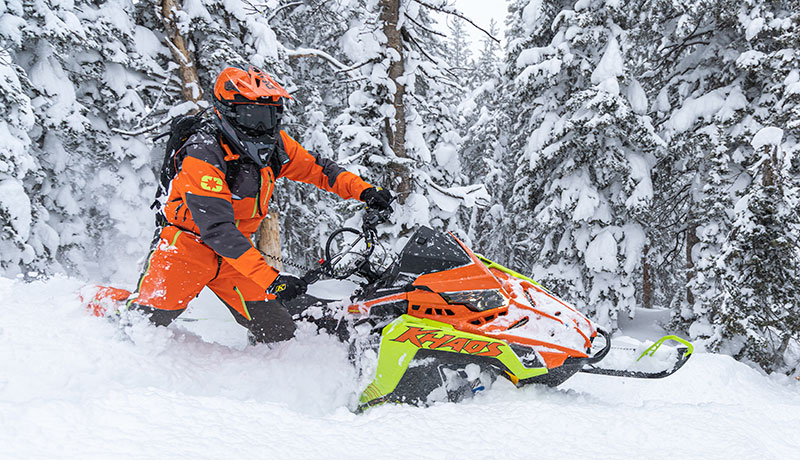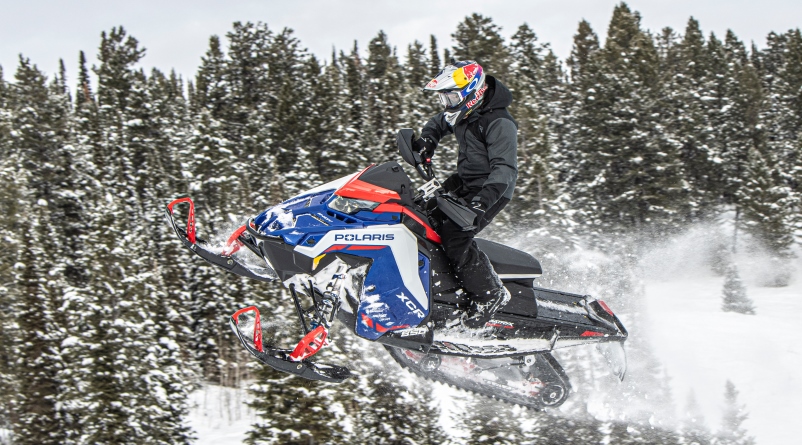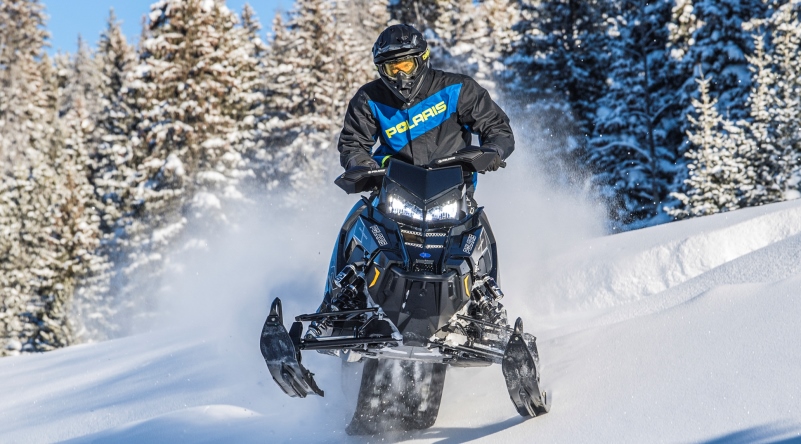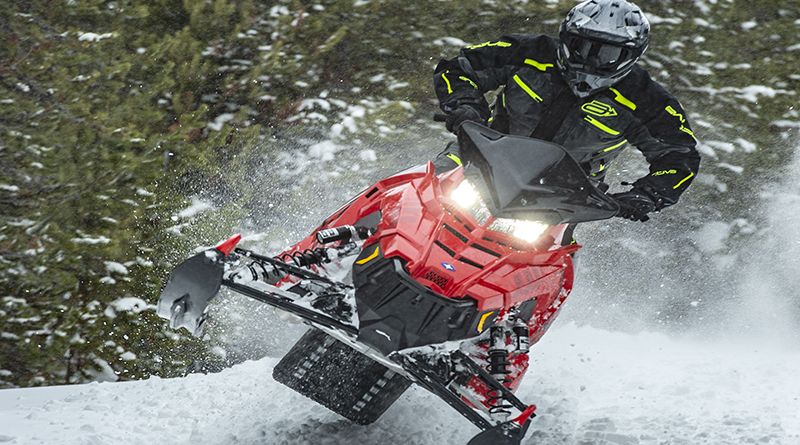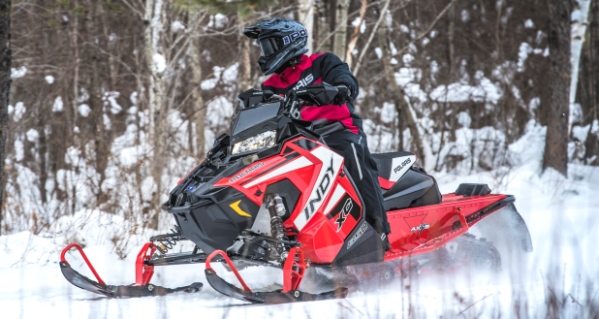Finally, Polaris got their musclesled right.
We were never big fans of Polaris’ Indy Storm. From the start, Polaris’ 800-class brute was underpowered among its peers, it didn’t offer handling better than any of its competition (which means it was like maneuvering a cube van on a slalom course) and its brake was outdated.
Last season, Polaris killed the Storm and replaced it with the Indy 800 XCR. This sled was lighter, faster and it handled better than its predecessor.
That said, it wasn’t without flaws. The sled was still quite heavy — its trail manners were good for an 800cc triple-triple, but we definitely knew we were on a big horse when on a trail. Polaris’ choice of brake on their new powerhouse had us baffled as well. The factory came out with a new stopper on Gen II machines, but the sled with the strongest acceleration and top-speed had the old brake. It was like trying to stop a cigarette boat with a 12-ounce anchor.
Finally, the Polaris Indy 800 XCR seemed to lose a little speed between the prototype we tested at the 1999 Rode Reports and the production machine that showed up at grass drags and in dealerships. The problem could be traced to the powerful new engine’s variable exhaust system, where taut springs were not allowing the engine to use its full breathing capacity on top end.
For 2000, Polaris has taken the things we whined about in last year’s eXtra Cool Rocketship and improved them. The weight is down, the power is up, the handling is better and the brake is class-leading.
New Generation of Musclesled

A switch to the second-year Gen II chassis, plus the use of the front suspension of its XC cousins, has improved the 800 XCR.
The Gen U configuration means the Polaris’ lone triple-triple for 2000 gets new body work, new hand and thumb warmer controls, new driver ergonomics and — most importantly — Polaris’ best brake.
We liked Polaris’ high performance hydraulic binder when we first tested it. After spending a year on the snow, we’re further convinced it could be the sport’s best brake. It isn’t as soft as the Ski-Doo, as grabby as the Cat and it won’t fade under heavy stress like the Yamaha brake.
The new body work and other changes strip 15 pounds from the 2000 Polaris Indy 800 XCR. You can feel every single lost pound on the trail — the 800 handles like a slightly oversized performance special, hugging corners and staying where we want it.
That is aided by the switch to the XC-10 front suspension with a 42.5-inch, center-to-center ski stance. The XC-10, with its tipped-in trailing arms and CRC handling package, is the best front suspension Polaris has ever put on a consumer sled. The wider stance for the plastic skis allows for 10 inches of travel and improves stability.
As a point of comparison, we jumped on the XCR right after completing a tide on Ski-Doo’s Mach Z. The difference was immense. We could corner harder with more control on the lighter, more nimble XCR.
The rear suspension is Polaris’ fully coupled XTRA-10 skid. Fox internal floating piston gas shocks are found front and rear on the 800 XCR, though we still wish it had the PPS position sensitive shock.
The 794cc liquid-cooled Fuji triple is in its sophomore season. Three flat slide 38mm carbs feed the NiCaSil-lined cylinders through case reed induction. Digital CDI lights the fire and the spent charge exits through triple exhaust ports.
Those ports change in size for maximum output at all RPM levels, thanks to Polaris variable exhaust system (yES). Polaris and Fuji engineers revised the system slightly for 2000 to make the engine fit in the smaller Gen II chassis. But, while they were at it, the engineers tweaked the system to gain about 3 HP, according to Polaris officials. They also used new springs in the YES that are quite similar to the ones suggested in a Polaris service bulletin last winter. Early season dyno pulls on the 2000 engine back up the Polaris hype: racers are getting 155-157 HP out of the triple in stock form, compared to a generous 152 HP last year. The power hit is immediate, with a broad and steep powerband.
Engineers recalibrated the flat slide Mikuni carbs for better fuel mileage and played with the timing slightly. A better cooling system was also added.
Creature comforts include the Gen II’s longer, straighter handlebars; four-position hand warmers and three-position thumb warmers; electric fuel gauge; flared windshield; and a triple bulb headlight. The Gen II fit expertly for 6-footers and smaller, but taller drivers said they were a bit cramped on this new layout.
In the final analysis, the 2000 Polaris Indy 800 XCR is a vastly improved machine that easily out-handles the Mach Z and doesn’t exhibit the ski lift of Cat’s ZRT 800.
STATS:
Engine:Liquid-cooled, triple—cylinder 794cc with case-reed induction, variable exhaust ports, 38mm flat slide carbs and triple pipes.
Hits:
+ Handling
+ Weight Loss
+ Power
+ Ergonomics
Misses:
– No PPS Shock
– Clumsy Throttle Lever
SPECS:
Front Suspension:
XC-1O with Controlled Roll Center package offering 10 inches of travel dampened by twoFox internal floating piston gas shocks.
Rear Suspension:
XTRA-1O Race with 10.2 inches of travel dampened by Fox internal floating piston gas shocks front and rear.
Features: Electric fuel gauge, heated hand and thumb grips, 11.8 gallon gas tank and plastic skis.
Listed Dry Weight: 555 pounds
Price: $8,599 (U.S.); $11,099 (Canada)

